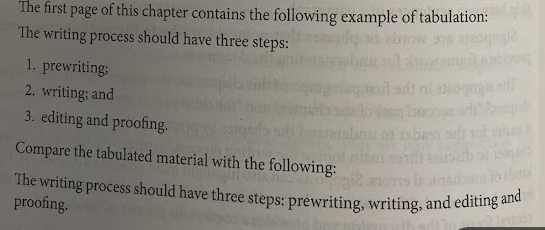Introduction to Legal Writing - CHAPTER 10
Fundamentals of Writing Chapter
The writing process is made of three steps: prewriting, writing, and editing + proofing
Prewriting
performing necessary research, formulating a writing plan, and outlining
should include good note taking
will be more or less extensive depending on the type of document
research standard formatting for the documents you are writing
if it’s an office memo, a memorandum of law, or an appellate brief, it should involve creating a thesis
create a flow chat and outline
Writing
follow the formatting rules of the documents
keep the reader in mind when organizing
inverted pyramid
a discussion or reasoning portion of a legal document should contain an introduction, explain relevant law, and apply law to facts
Unlike other forms of writing legal documents are not necessarily reader friendly
don’t let long block quotes consume the document
develop the idea in the introduction and lead up to the conclusion
guide the reader through it
there are two sections
Fact Section: include important facts, stated accurately but do not hide adverse material.
Discussion Section: contain an Introduction, state the law, and apply the law. Do not over use quotes but cite correctly. Above all else be logical explaining step by step your thoughts
an office memo is used to record law found as a result of research, explain how you analyzed the law and applied the facts to it, and propose a solution to the problem
typically: facts, issue, answer, reasoning, conclusion
most paragraphs need a topic sentence
first sentence to grab attention, second is topic sentence
most sentences should follow subject, verb, and object
the reader will remember the beginning and end of a sentence more than the middle of it
use transitional language and create signposts (words or phrases in a document that point the reader in the right direction and provide a framework for understanding the document.)
"However, Therefore, Wherefore”
“In chapter 1…….”, “Florida Statutes hold……”
each paragraph should discuss one main idea
each page of print should contain a minimum of two to three paragraphs
you can convey things through graphics as well (tables and diagrams and timelines and stuff)
Common mechanical errors
quoting from a headnote or case syllabus
not italicizing a case name
italicize last name when referring to case
not using plain English
not giving a page reference to material from a primary or secondary source
not quoting exactly
plagiarizing
using contractions or “I” in more formal legal documents
using a number of different words to refer to the thing (elegant variation)
attorney being also referred to as “lawyer” “counselor” or “practitioner"
choose one word and stick to it

Oral Argument is Shakespeare: Exciting, Passionate, Charismatic
Written Argument is Webster’s Dictionary: Dry, Boring, Logical
Editing:
A. Does the writing make sense.
B. Are mechanical errors corrected.
C. Are all formatting requirements correct.
D. Are all citations correct.